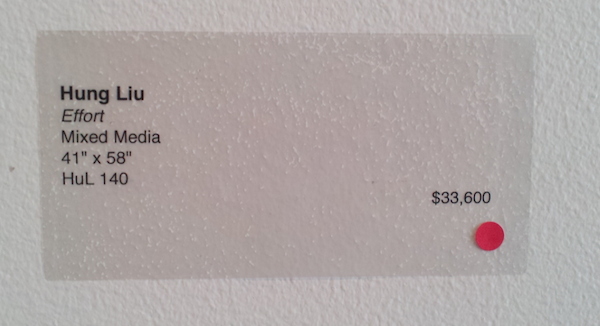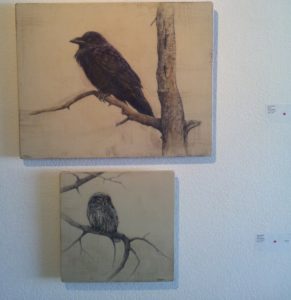Deciding how to price artwork is probably the most difficult decision artists have to make.
Yet, finding the optimal price has a triple benefit: it provides the artist with reasonable compensation for the creative work, and makes the buyer feel confident about investing in a particular piece. And most importantly, it generates sales.
Buying art is a very personal experience. A combination of rational and emotional factors transforms a casual viewer into a motivated buyer. The importance that each factor plays in closing the deal depends on the level of exposure and interest your paintings enjoy.
An emerging artist with little exposure will have to use a fact-based sales pitch and price artwork accordingly. Once your artist brand becomes more recognizable, emotional factors become much more important.
So how do you find the optimal price for your artwork? Below are a few pricing strategies artists can use as they embark on the journey of building a recognizable brand:
Cost-Based Pricing
This is a good option if you are an emerging artist with little or no sales history. At the most basic level the selling price of a particular piece should at least cover your costs (time and materials) related to creating it.
Simply decide on an hourly rate you would like to be paid and multiply it by the time dedicated to creating a particular piece. Don’t forget to add the cost of paint and related materials used during the process. Be prepared to answer questions from buyers who might not understand (or care) how long it took you to create the paintings. In order to prove your point it’s always good practice to ensure your prices are in line with similar works by other artists at the same stage of their artistic careers.

Past Sales
Your previous sales are an excellent indicator of the price you should be charging for your artworks.
A realistic analysis will exclude the sales you made to your family members or close circle of friends. You will also need to compare apples to apples, and adjust pricing depending on the painting size, materials and technique involved and other objective factors you can easily justify in front of the buyer.
Competition
The modern art buyer is more sophisticated than ever. Modern technology allows for greater exposure but also opens the door to more competition. Although each painting is unique, the choice is abundant, and the art buyer is now able to perform extensive research before committing to a particular piece.
Given the level of competition in the art market, it is mandatory that you compare your prices against works by artists with similar accomplishments, exposure and experience. Always take into account the price paintings comparable to yours sell for, not the listing price. If an artist has works listed between $1000 and $10,000 but the most expensive sells for $5000, that’s the high-end range you should aim for.

“People don’t buy art, they buy the artist.”
Reputation
It’s been said that people don’t buy art, they buy the artist. Once you’ve built a solid resume and your artwork receives increased exposure and interest, you will be able to charge higher prices. Reputations take years to build, and minutes to destroy. Having a consistent pricing strategy goes a long way to building confidence and trust in your artist brand.
Here are some tips on how to achieve it:
- Target a specific price bracket. The buyers will enjoy a certain level of comfort knowing what they should expect to pay for your work, which in time builds credibility in you as an artist. Your price bracket is determined by the lowest and highest price most of your art sells for. Once your reputation is growing your price bracket will move up, but will still make sense.
- Avoid pricing art based on how emotionally attached you are to it. As owner of an online gallery, I sometimes receive requests from artists to upload pieces that fit nicely within their existing online portfolio but are priced up to 10 times higher. The only reason provided is that the more expensive piece is part of the artist’s private collection and has a special meaning. While perfectly understandable from an artist perspective, subjective qualities are very hard to justify to the buyer. It is best to keep works that have a special meaning for personal enjoyment.
- Pricing your paintings for consistent sales takes a lot of research and a serious dose of objectivity. In order to be successful your artwork has to be competitively priced, regardless of how business-oriented the term sounds. Competitive prices translate into more sales and increased exposure, which in turn lead to you being able to charge more for your art.
Guest author: Dragos Baicoianu is the owner of BrushTreasures.com, a selective online gallery specialized in meaningful original paintings by North American and international artists.








Does one charge for the frame in their pricing of their artwork? I have heard from one gallery owner that you do not add the framing expense to the price of the painting. What are your thoughts?
Hello Mary, I always add in the cost of the frame! In fact, if you paid wholesale for the frame you should double the cost! Why should you have to eat the cost of the frame? Just pad it into the cost of the art. Don’t even tell the gallery. Set your price. Good luck!